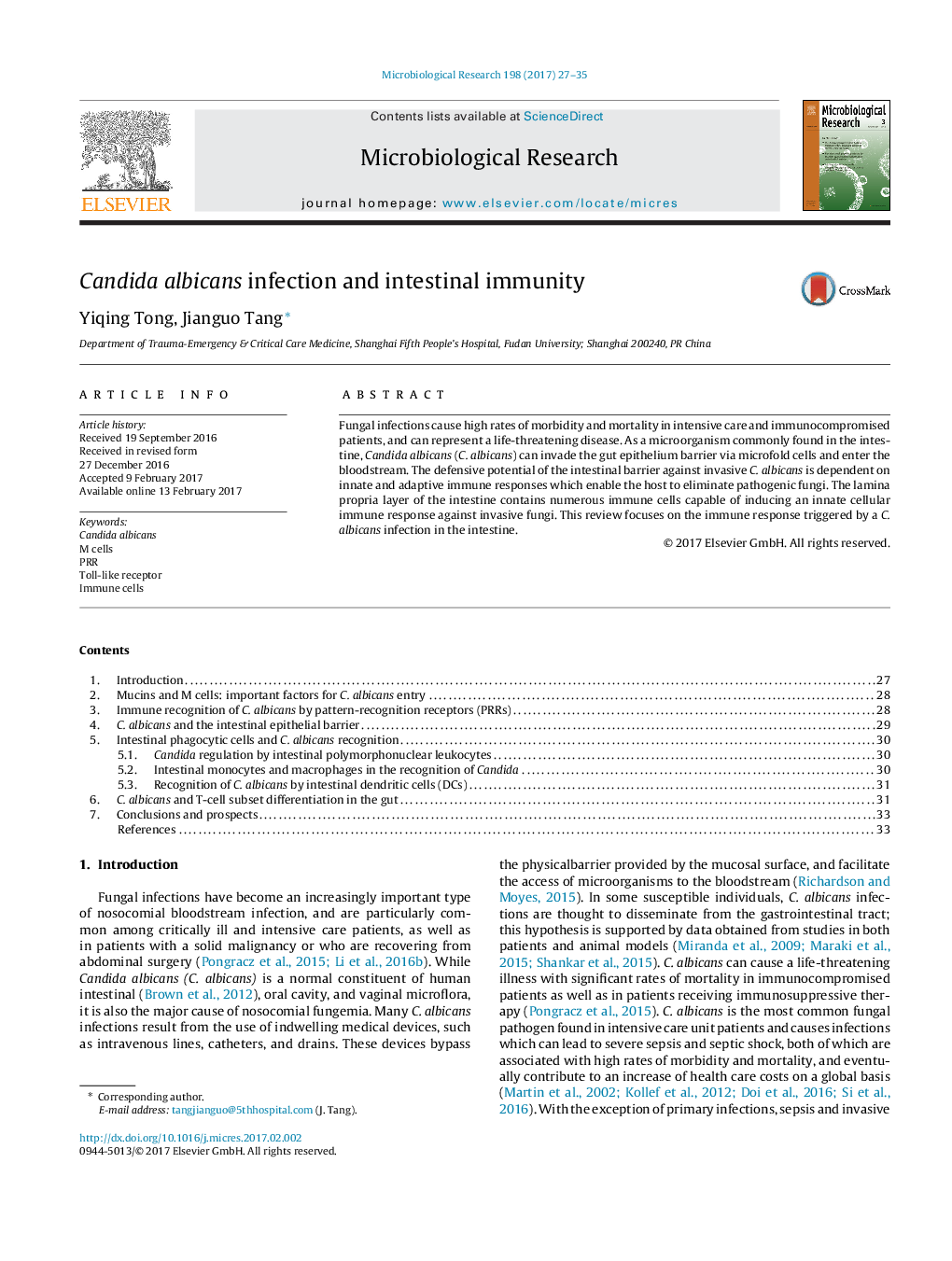| Article ID | Journal | Published Year | Pages | File Type |
|---|---|---|---|---|
| 5522498 | Microbiological Research | 2017 | 9 Pages |
Fungal infections cause high rates of morbidity and mortality in intensive care and immunocompromised patients, and can represent a life-threatening disease. As a microorganism commonly found in the intestine, Candida albicans (C. albicans) can invade the gut epithelium barrier via microfold cells and enter the bloodstream. The defensive potential of the intestinal barrier against invasive C. albicans is dependent on innate and adaptive immune responses which enable the host to eliminate pathogenic fungi. The lamina propria layer of the intestine contains numerous immune cells capable of inducing an innate cellular immune response against invasive fungi. This review focuses on the immune response triggered by a C. albicans infection in the intestine.
